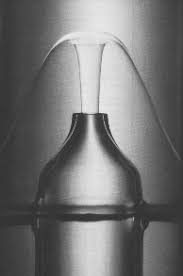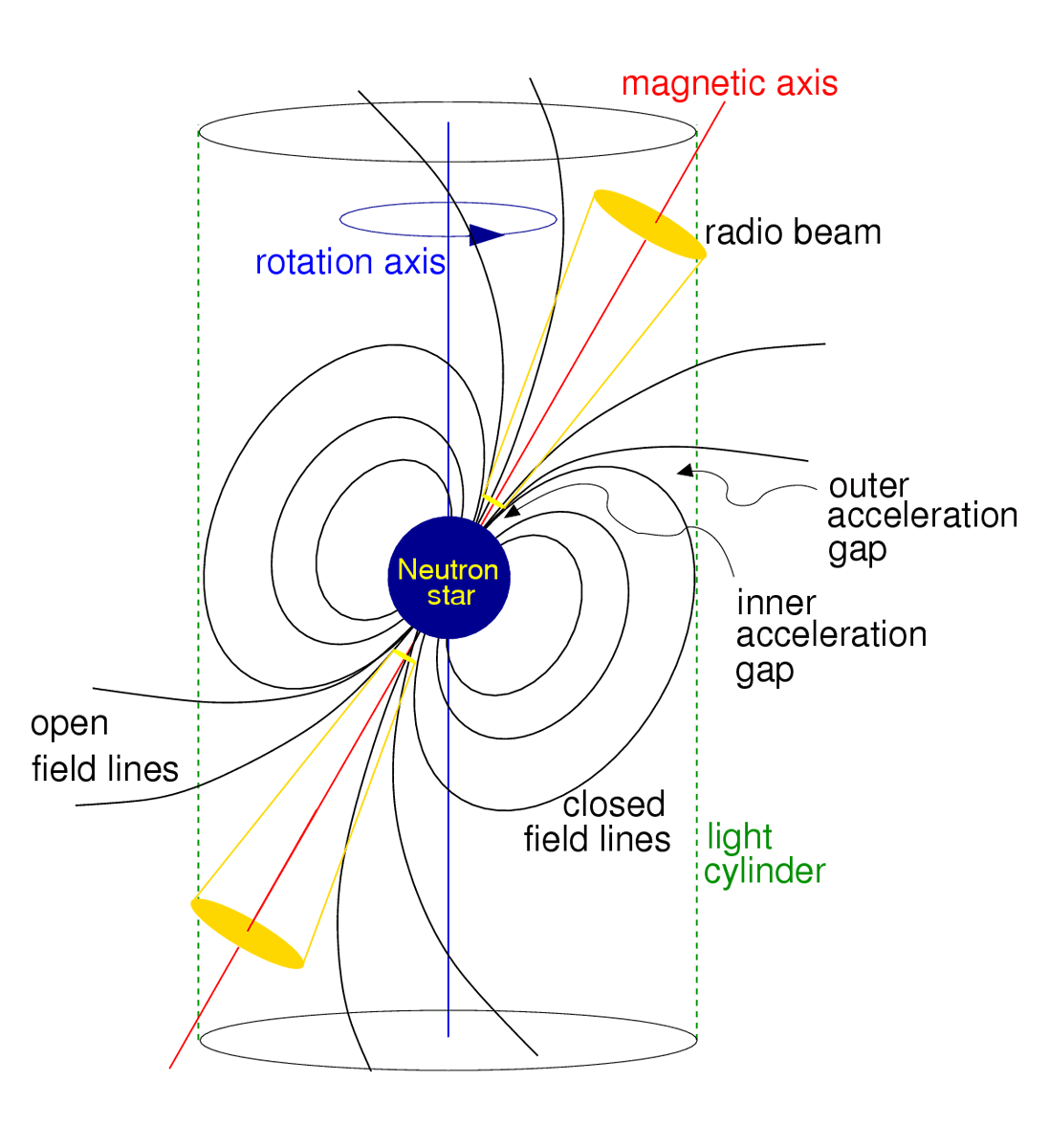Time for some scicomm! We are talking abt #pulsars! What are they? How do we detect them? All that and more  https://abs.twimg.com/emoji/v2/... draggable="false" alt="😍" title="Smiling face with heart-shaped eyes" aria-label="Emoji: Smiling face with heart-shaped eyes">! Let& #39;s go!
https://abs.twimg.com/emoji/v2/... draggable="false" alt="😍" title="Smiling face with heart-shaped eyes" aria-label="Emoji: Smiling face with heart-shaped eyes">! Let& #39;s go!
#AcademicTwitter
@OpenAcademics
@AcademicChatter
#AcademicTwitter
@OpenAcademics
@AcademicChatter
If u like this, RT! If u wud like more of threads like these, follow me! And if u don& #39;t like it, give me some feedback!
Pulsars are neutron stars  https://abs.twimg.com/emoji/v2/... draggable="false" alt="🌟" title="Glowing star" aria-label="Emoji: Glowing star"> that emit electromagnetic radiation from both their magnetic
https://abs.twimg.com/emoji/v2/... draggable="false" alt="🌟" title="Glowing star" aria-label="Emoji: Glowing star"> that emit electromagnetic radiation from both their magnetic  https://abs.twimg.com/emoji/v2/... draggable="false" alt="🧲" title="Magnet" aria-label="Emoji: Magnet"> poles. But first, what are neutron stars? 1/?
https://abs.twimg.com/emoji/v2/... draggable="false" alt="🧲" title="Magnet" aria-label="Emoji: Magnet"> poles. But first, what are neutron stars? 1/?
Neutron stars are remnants of dead stars.
Stars heavier than abt 1.4 times our sun (that& #39;s the Chandrashekhar limit!) explode in a supernova.
A small object is left behind, comprised ALMOST entirely of neutrons.
(Remember that. That will be crucial later on. https://abs.twimg.com/emoji/v2/... draggable="false" alt="🤔" title="Thinking face" aria-label="Emoji: Thinking face">) 2/?
https://abs.twimg.com/emoji/v2/... draggable="false" alt="🤔" title="Thinking face" aria-label="Emoji: Thinking face">) 2/?
Stars heavier than abt 1.4 times our sun (that& #39;s the Chandrashekhar limit!) explode in a supernova.
A small object is left behind, comprised ALMOST entirely of neutrons.
(Remember that. That will be crucial later on.
That& #39;s a neutron star. Star stuff is converted to neutrons by gravity. It crushes atoms so badly that electrons crash into the nucleus.
And this gives us all those neutrons, as electrons combine with protons in the nucleus to give us - u guessed it - MORE neutrons. 3/?
And this gives us all those neutrons, as electrons combine with protons in the nucleus to give us - u guessed it - MORE neutrons. 3/?
Now that we have got that covered, how are pulsars emitting radiation? Remember when I said that neutron stars are NOT entirely comprised of neutrons? Well... 4/?
Some electrons and protons are left behind inside the neutron star! (like some cake  https://abs.twimg.com/emoji/v2/... draggable="false" alt="🍰" title="Shortcake" aria-label="Emoji: Shortcake"> batter is left behind in the mixing bowl when u are baking a cake!) 5/?
https://abs.twimg.com/emoji/v2/... draggable="false" alt="🍰" title="Shortcake" aria-label="Emoji: Shortcake"> batter is left behind in the mixing bowl when u are baking a cake!) 5/?
A neutron star is like an egg  https://abs.twimg.com/emoji/v2/... draggable="false" alt="🥚" title="Egg" aria-label="Emoji: Egg"> - crusty on the outside, yolky on the inside. Only:
https://abs.twimg.com/emoji/v2/... draggable="false" alt="🥚" title="Egg" aria-label="Emoji: Egg"> - crusty on the outside, yolky on the inside. Only:
Shell = Nuclei crust
Yolk = Neutron superfluid (with traces of electrons and protons. 6/?
Shell = Nuclei crust
Yolk = Neutron superfluid (with traces of electrons and protons. 6/?
Q: What& #39;s a superfluid?
A: A superfluid is a fluid that flows without friction (that is, NO viscosity). Like in the pic https://abs.twimg.com/emoji/v2/... draggable="false" alt="👇" title="Down pointing backhand index" aria-label="Emoji: Down pointing backhand index">, superfluid can gush out of containers on their own! 7/?
https://abs.twimg.com/emoji/v2/... draggable="false" alt="👇" title="Down pointing backhand index" aria-label="Emoji: Down pointing backhand index">, superfluid can gush out of containers on their own! 7/?
A: A superfluid is a fluid that flows without friction (that is, NO viscosity). Like in the pic
When alive, the star was rotating (just like our  https://abs.twimg.com/emoji/v2/... draggable="false" alt="🌞" title="Sun with face" aria-label="Emoji: Sun with face">). When it died, it transferred that rotation to the neutron star it left behind. 8/?
https://abs.twimg.com/emoji/v2/... draggable="false" alt="🌞" title="Sun with face" aria-label="Emoji: Sun with face">). When it died, it transferred that rotation to the neutron star it left behind. 8/?
But since our neutron star is WAY smaller, it spins WAY faster, the same way an ice skater spins faster when they tuck their arms in.
The fastest pulsar rotates more than 700 times in 1 second https://abs.twimg.com/emoji/v2/... draggable="false" alt="⏱️" title="Stopwatch" aria-label="Emoji: Stopwatch">! 9/?
https://abs.twimg.com/emoji/v2/... draggable="false" alt="⏱️" title="Stopwatch" aria-label="Emoji: Stopwatch">! 9/?
The fastest pulsar rotates more than 700 times in 1 second
With a rotation that fast, and no friction, the superfluid (like egg yolk) is spinning independent of the crust. 10/?
U can try this with an egg  https://abs.twimg.com/emoji/v2/... draggable="false" alt="🥚" title="Egg" aria-label="Emoji: Egg">! Take an unboiled egg and set it rotating on a table/kitchen slab. When you stop the egg lightly and let it go, it starts rotating again!
https://abs.twimg.com/emoji/v2/... draggable="false" alt="🥚" title="Egg" aria-label="Emoji: Egg">! Take an unboiled egg and set it rotating on a table/kitchen slab. When you stop the egg lightly and let it go, it starts rotating again!
That& #39;s bcoz of the same effect - the yolk is rotating faster than and independently of the shell. 11/?
That& #39;s bcoz of the same effect - the yolk is rotating faster than and independently of the shell. 11/?
While our neutron superfluid rotates, the electrons and protons rotate too. And when they rotate without resistance at insane speeds, we get...
Drumroll plz... https://abs.twimg.com/emoji/v2/... draggable="false" alt="🥁" title="Drum" aria-label="Emoji: Drum"> 12/?
https://abs.twimg.com/emoji/v2/... draggable="false" alt="🥁" title="Drum" aria-label="Emoji: Drum"> 12/?
Drumroll plz...
A superconducting current! And a pretty strong one at that. Why? Remember that an electric current is just moving charged particles (in metal wires, these are just electrons).
This HUGE current gives us a HUGE magnetic https://abs.twimg.com/emoji/v2/... draggable="false" alt="🧲" title="Magnet" aria-label="Emoji: Magnet"> field! 13/?
https://abs.twimg.com/emoji/v2/... draggable="false" alt="🧲" title="Magnet" aria-label="Emoji: Magnet"> field! 13/?
This HUGE current gives us a HUGE magnetic
A neutron star/pulsar can have a magnetic  https://abs.twimg.com/emoji/v2/... draggable="false" alt="🧲" title="Magnet" aria-label="Emoji: Magnet"> field as large as a billion (that& #39;s 1 followed by 9 zeros) times Earth& #39;s
https://abs.twimg.com/emoji/v2/... draggable="false" alt="🧲" title="Magnet" aria-label="Emoji: Magnet"> field as large as a billion (that& #39;s 1 followed by 9 zeros) times Earth& #39;s  https://abs.twimg.com/emoji/v2/... draggable="false" alt="🌍" title="Earth globe europe-africa" aria-label="Emoji: Earth globe europe-africa"> magnetic field. 14/?
https://abs.twimg.com/emoji/v2/... draggable="false" alt="🌍" title="Earth globe europe-africa" aria-label="Emoji: Earth globe europe-africa"> magnetic field. 14/?
No kidding! Now this super strong  https://abs.twimg.com/emoji/v2/... draggable="false" alt="💪" title="Flexed biceps" aria-label="Emoji: Flexed biceps"> magnetic
https://abs.twimg.com/emoji/v2/... draggable="false" alt="💪" title="Flexed biceps" aria-label="Emoji: Flexed biceps"> magnetic  https://abs.twimg.com/emoji/v2/... draggable="false" alt="🧲" title="Magnet" aria-label="Emoji: Magnet"> field is rotating at a horrific speed! Since it is a vector, this means that it is changing very rapidly with time. And that implies... 15/?
https://abs.twimg.com/emoji/v2/... draggable="false" alt="🧲" title="Magnet" aria-label="Emoji: Magnet"> field is rotating at a horrific speed! Since it is a vector, this means that it is changing very rapidly with time. And that implies... 15/?
...a HUGE electric  https://abs.twimg.com/emoji/v2/... draggable="false" alt="⚡" title="High voltage sign" aria-label="Emoji: High voltage sign"> field. Like 10 times the force of gravity on the neutron star surface! What does this do? It plucks charged particles from the surface and throws them out! This forms a plasma around the neutron star. 16/?
https://abs.twimg.com/emoji/v2/... draggable="false" alt="⚡" title="High voltage sign" aria-label="Emoji: High voltage sign"> field. Like 10 times the force of gravity on the neutron star surface! What does this do? It plucks charged particles from the surface and throws them out! This forms a plasma around the neutron star. 16/?
This plasma is the pulsar magnetosphere.
Our Earth also has one, but we get our charged particles from the Sun https://abs.twimg.com/emoji/v2/... draggable="false" alt="🌞" title="Sun with face" aria-label="Emoji: Sun with face">!
https://abs.twimg.com/emoji/v2/... draggable="false" alt="🌞" title="Sun with face" aria-label="Emoji: Sun with face">!  https://abs.twimg.com/emoji/v2/... draggable="false" alt="😁" title="Grinning face with smiling eyes" aria-label="Emoji: Grinning face with smiling eyes"> 17/?
https://abs.twimg.com/emoji/v2/... draggable="false" alt="😁" title="Grinning face with smiling eyes" aria-label="Emoji: Grinning face with smiling eyes"> 17/?
Our Earth also has one, but we get our charged particles from the Sun
The plasma experiences the same force as the superfluid inside the neutron star and so it spins with it. But this can only happen until...the plasma starts rotating at the speed of light! 18/?
The distance (from the surface) where this happens is the radius of the so-called LIGHT CYLINDER! (Pulsar astronomy has the coolest names!)
Figure from "Handbook of Pulsar Astronomy", by Duncan Lorimer ( @SenDuckworth) and Michael Kramer. 19/?
Figure from "Handbook of Pulsar Astronomy", by Duncan Lorimer ( @SenDuckworth) and Michael Kramer. 19/?
The light cylinder divides the magnetic field lines into two: closed and open. Magnetic field lines INSIDE the light cylinder are closed, and the ones OUTSIDE it are open.
Figure from "Handbook of Pulsar Astronomy", by Duncan Lorimer ( @SenDuckworth) and Michael Kramer. 20/?
Figure from "Handbook of Pulsar Astronomy", by Duncan Lorimer ( @SenDuckworth) and Michael Kramer. 20/?
Particles can now get attached to the magnetic field lines near the pole and (like a train https://abs.twimg.com/emoji/v2/... draggable="false" alt="🚆" title="Train" aria-label="Emoji: Train"> on a track) they depart for an unknown destination.
https://abs.twimg.com/emoji/v2/... draggable="false" alt="🚆" title="Train" aria-label="Emoji: Train"> on a track) they depart for an unknown destination.
This leaves the pole with a gap, where there is NO plasma. That gap is called the POLAR GAP. 21/?
This leaves the pole with a gap, where there is NO plasma. That gap is called the POLAR GAP. 21/?
Inside the polar gap, we now have a HUGE residual electric  https://abs.twimg.com/emoji/v2/... draggable="false" alt="⚡" title="High voltage sign" aria-label="Emoji: High voltage sign"> field, since the charge that was shielding it is gone. So plasma particles can get accelerated to HIGH speeds (close to light speed!) due to this leftover electric field! 22/?
https://abs.twimg.com/emoji/v2/... draggable="false" alt="⚡" title="High voltage sign" aria-label="Emoji: High voltage sign"> field, since the charge that was shielding it is gone. So plasma particles can get accelerated to HIGH speeds (close to light speed!) due to this leftover electric field! 22/?
These high speed daredevils start radiating gamma-rays bcoz they are accelerating so fast. And these gamma-rays, in turn, can produce electron-positron pairs! 23/?
These electron-positron pairs now radiate more gamma rays, which produce more electron-positron pairs, and on and on, until this goes into a CASCADE! (Just like an avalanche!)
This multiple the concentration of plasma around the neutron star a thousand-fold! 24/?
This multiple the concentration of plasma around the neutron star a thousand-fold! 24/?
This cascade is ultimately responsible for the radio emission from a pulsar!
But how exactly? Well honestly...we don& #39;t know! The mysteries of pulsar radio emission are well-known in the field, and still very much an open problem. 25/?
But how exactly? Well honestly...we don& #39;t know! The mysteries of pulsar radio emission are well-known in the field, and still very much an open problem. 25/?
There are theories of course, but none of them can explain ALL aspects of a pulsar& #39;s radio emission.
This the end of this thread folks. Ask questions and I will try my best to answer them.
Be warned though: I DON& #39;T specialise in pulsar emission mechanisms.
26/26
This the end of this thread folks. Ask questions and I will try my best to answer them.
Be warned though: I DON& #39;T specialise in pulsar emission mechanisms.
26/26
RT if u liked it. Follow for more. And, most importantly, tell me if I cud have done smthing better in the replies!

 Read on Twitter
Read on Twitter , superfluid can gush out of containers on their own! 7/?" title="Q: What& #39;s a superfluid?A: A superfluid is a fluid that flows without friction (that is, NO viscosity). Like in the pic https://abs.twimg.com/emoji/v2/... draggable="false" alt="👇" title="Down pointing backhand index" aria-label="Emoji: Down pointing backhand index">, superfluid can gush out of containers on their own! 7/?" class="img-responsive" style="max-width:100%;"/>
, superfluid can gush out of containers on their own! 7/?" title="Q: What& #39;s a superfluid?A: A superfluid is a fluid that flows without friction (that is, NO viscosity). Like in the pic https://abs.twimg.com/emoji/v2/... draggable="false" alt="👇" title="Down pointing backhand index" aria-label="Emoji: Down pointing backhand index">, superfluid can gush out of containers on their own! 7/?" class="img-responsive" style="max-width:100%;"/>




